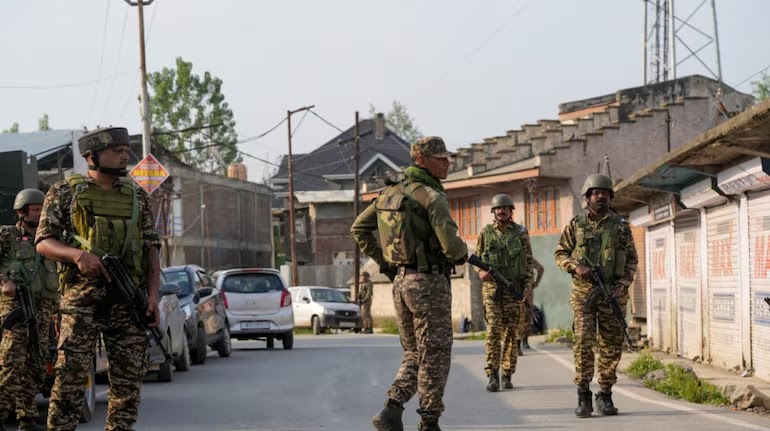Welcome to today’s Panorama — the newsletter we bring exclusively to Moneycontrol Pro subscribers on trading days. It’s your easy gateway to our top stories, plus extra context on the key events and trends investors should watch.
And today, there’s a lot happening.
On May 7, 2025, India launched Operation Sindoor, conducting precision airstrikes on nine terrorist locations across Pakistan and Pakistan-occupied Jammu and Kashmir (PoK). This was in direct response to the April 22 Pahalgam attack, where 26 people, including 25 Indian nationals and one Nepali citizen, lost their lives.
The Ministry of Defence has framed these strikes as “focused, measured, and non-escalatory”, deliberately steering clear of Pakistani military targets to avoid widening the conflict.
As this newsletter goes out, Indian financial markets are on a bumpy ride—volatile, but recovering from early-day losses. Shishir Asthana takes a closer look at how the strikes could shape market movements.
Also check: first4roofing | first4driveways
Looking Back: History Offers Clues
If past patterns tell us anything, it’s that markets often absorb geopolitical shocks faster than we might expect.
-
During the 1999 Kargil conflict, the BSE Sensex fell about 5% in the early phase but bounced back within months as tensions cooled.
-
Post the 2019 Balakot airstrikes, the Sensex slipped just 0.7% on the day, only to rally 7% over the following month, helped by diplomatic de-escalation.
Today, the Indian rupee has opened 19 paise weaker against the U.S. dollar, echoing the 1.5% depreciation seen in 2019 during the Balakot episode.
If the situation stays contained, markets could stabilize relatively quickly. But if uncertainty drags on—especially if Pakistan disrupts trade or energy routes—volatility could deepen.
Winners and Losers: Which Sectors Are Feeling the Heat?
The pain points are already visible. Aviation and tourism have been hit hard: major carriers like Air India, IndiGo, and SpiceJet have canceled flights to northern destinations. Jammu and Kashmir’s tourism sector, still reeling from the Pahalgam tragedy, is facing new revenue shocks.
In 2019, airlines reported a 10% drop in northern bookings after Balakot; we may see history repeat itself.
On the flip side, defence stocks are surging. Firms like Bharat Electronics, Hindustan Aeronautics, and Paras Defence are poised to benefit, mirroring the 15–20% rally defence companies enjoyed in the quarter following the 2019 strikes.
Energy markets are watching closely too. India’s potential suspension of the Indus Waters Treaty could ripple through agriculture and hydropower, much like the post-Uri tensions in 2016. Globally, oil prices—always sensitive to regional conflict—rose 5% during the 2019 flare-up, threatening to push up India’s import costs and pressuring the RBI to possibly tighten monetary policy.
Bright Spot: The India-UK Free Trade Agreement
Amid the tension, there’s positive news on the trade front.
The long-negotiated India-UK Free Trade Agreement (FTA) has been finalized, covering $21 billion in bilateral trade (don’t miss Abhijit Kumar Dutta’s detailed analysis).
This deal aims to reduce tariffs and boost Indian exports in sectors like textiles, pharmaceuticals, and IT services, while encouraging UK investment into Indian infrastructure and clean energy. Trade analysts estimate the FTA could add $50 billion to India’s GDP by 2030, similar to how the 2010 India-Japan FTA fueled growth, especially in auto exports.
Crucially, this agreement strengthens India’s global trade ties, offering a cushion against regional shocks—just as broader trade relationships helped stabilize the economy during the 1999 Kargil War.
Investor Takeaways: What Now?
There’s plenty on the plate for investors.
In the short term, Operation Sindoor could spook foreign institutional investors (FIIs), as it did in 2019 when they pulled out $300 million from Indian equities after Balakot. But domestic institutional investors (DIIs) continue to show faith, banking on India’s projected 6.5–7% GDP growth for 2025.
Retail investors should resist panic selling and focus on resilient large-cap stocks. As safe-haven assets, gold and government securities look appealing—remember, gold prices jumped 8% during the 2019 tensions.
Looking further ahead, the UK FTA strengthens the case for export-driven sectors like pharma and IT, making them attractive for patient, long-term investors.
History has shown that India’s economy holds its ground during Indo-Pakistan crises: GDP growth stood firm at 6.1% post-Kargil and 6.8% post-Balakot. How Operation Sindoor impacts markets depends largely on how long tensions persist. A swift de-escalation, as seen in 2019, could quickly restore confidence—with the India-UK FTA providing additional stability.
That said, a drawn-out conflict could strain fiscal resources, stoke inflation, delay expected RBI rate cuts, and hit small- and mid-cap stocks—just like the 10% fall seen in these segments during Kargil’s peak uncertainty.
